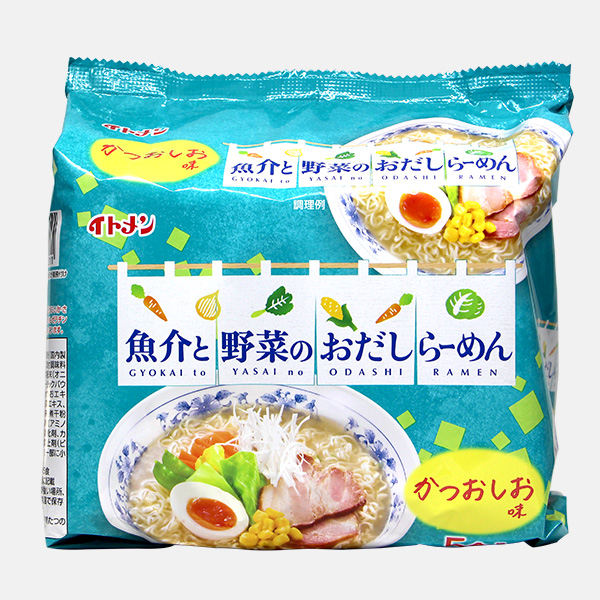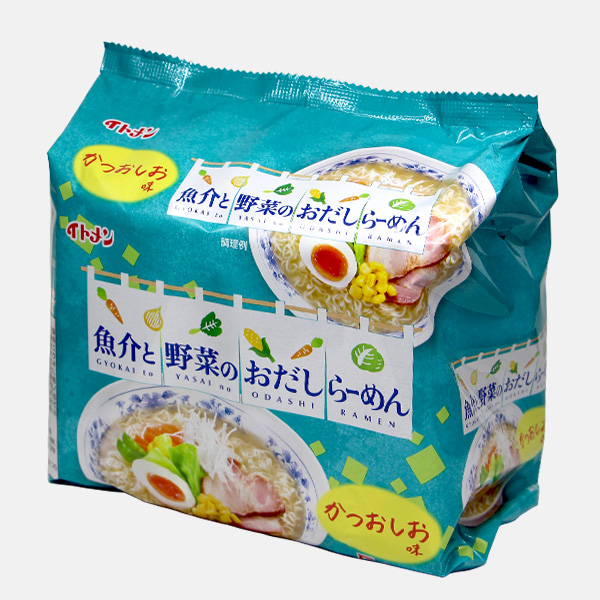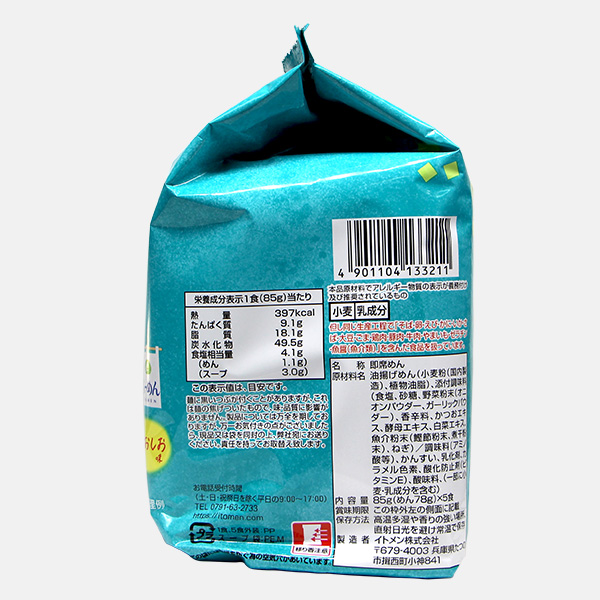Seafood and Vegetable Dashi Ramen
It has a salty taste with bonito dashi.
- Manufacturer code
- 000510
- Contents
- 85g
- Amount of noodles
- 78g
- Release date
- February 2020
- JAN code
- 4901104133211
- ITF Code
- 14901104133225
- Standard
- (85g x 5 meals) x 6 x 3
- Product size(mm)
- 185 x 110 x 160
- Box size(mm)
- 356 × 335 × 133
- expiry date
- 8 months
- Gross weight per box
- 2.85kg
- Product weight
- 440g
- Suggested retail price
- 615 yen
- Wheat
- Buckwheat
- Eggs
- Milk constituent
- Peanuts
- Shrimp
- Crab
- Pork
- Chicken
- Beef
- Squid
- Salmon
- Mackerel
- Salmon roe
- Abalone
- Soy
- Yam
- Walnuts
- Matsutake mushroom
- Apple
- Orange
- Banana
- Peach
- Kiwi
- Gelatine
- Sesame
- Almonds
- Cashew nuts
- Energy
- 397 kcal
- Protein
- 9.1g
- Lipoid
- 18.1g
- Carbohydrates
- 49.5g
- Salt
- 4.1g(1.1g noodles, 3.0g soup)
Per serving (100g)
Fried noodles (wheat flour (manufactured in Japan), vegetable oil and fat), seasoning (salt, sugar, vegetable powder (onion powder, garlic powder), spices, bonito extract, yeast extract, Chinese cabbage extract, seafood powder (dried bonito flakes powder, dried bonito powder), spring onion) / seasoning (amino acids, etc.), brine, emulsifier, caramel color, antioxidant (vitamin E), acidulant, (contains wheat and milk ingredients)
However, in the same production process, we handle foods that contain buckwheat, eggs, shrimp, crab, squid, mackerel, soybeans, sesame, chicken, pork, beef, yam, gelatin, and fish sauce (seafood).
| Raw materials | Main country of origin | Final processing place |
|---|---|---|
| [Noodle] Wheat flour | USA, Canada, Australia, Japan | Japan |
- The following is a list of possible regions for use. ( As of July, 2015) We use the most suitable combination of regions depending on the circumstances of the raw materials.
- The main sources of raw materials are listed in no particular order, regardless of whether they are used in large or small quantities, or late or early.










